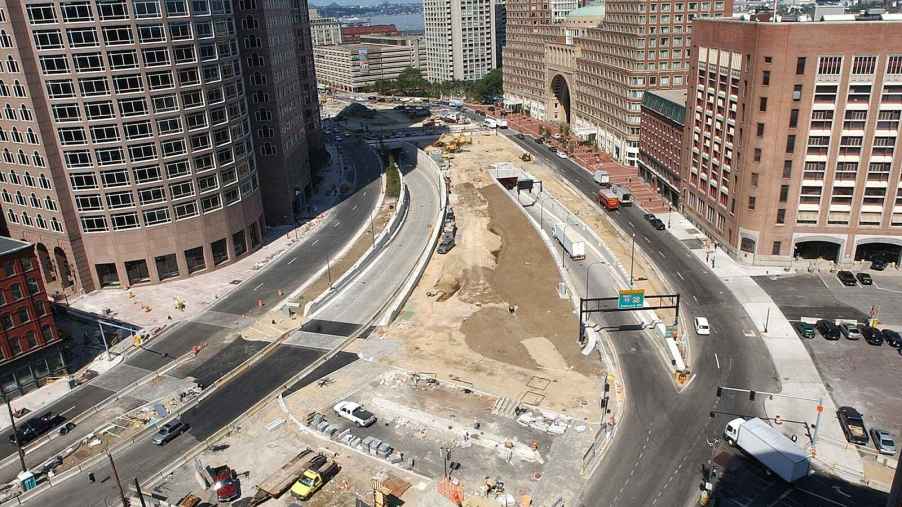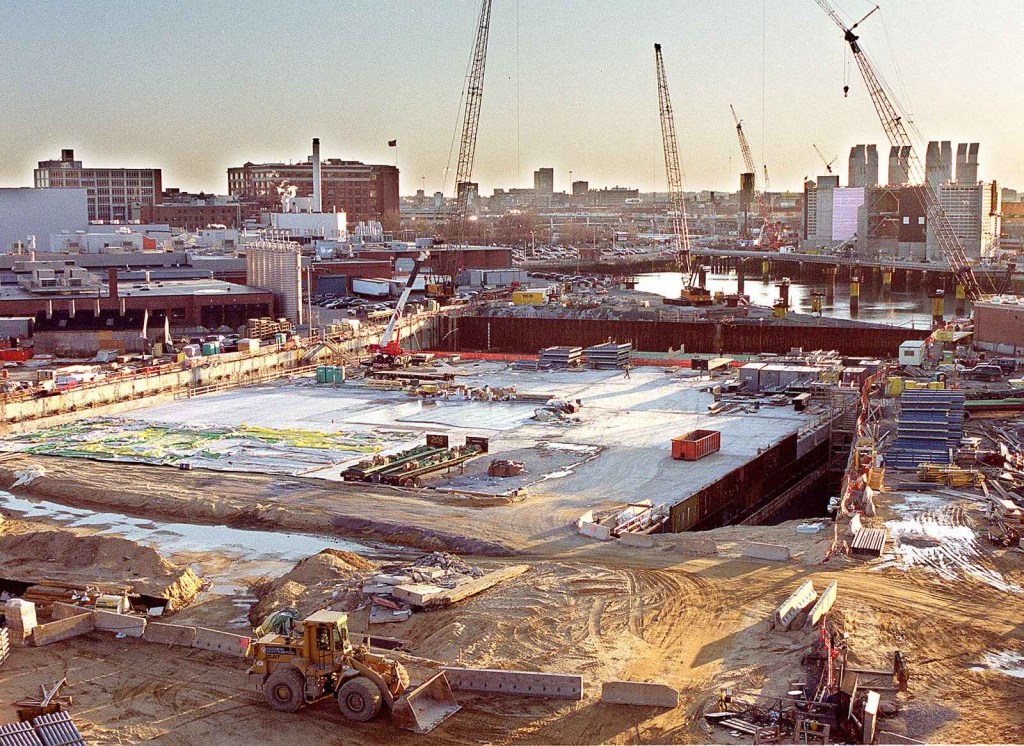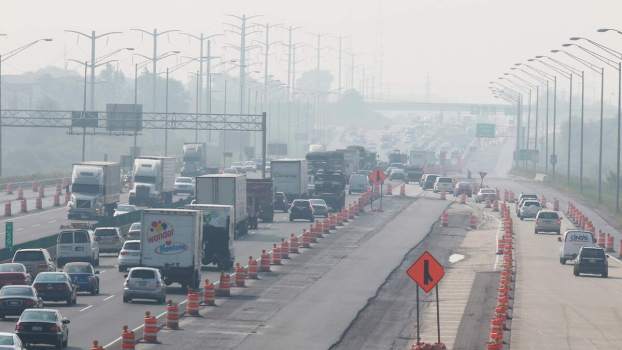
Boston’s Infamous ‘Big Dig’ Highway Megaproject Overrun Cost More Than $20 Billion
The “Big Dig” highway project has been dubbed “the largest, most challenging highway project in the history of the United States.” Its scope, price tag, and engineering feats certainly live up to that designation. The project, aimed at curbing Boston’s “world-class traffic problem,” turned out to be perhaps the most ambitious and expensive highway improvement project ever constructed in the U.S. And nothing seemingly went to plan.
Over 20 years and $20 billion were dumped into the ‘Big Dig’
Boston’s Central Artery, an elevated highway running through the major metropolitan city’s downtown area, first opened in 1959. But a few decades later, the number of cars using the highway had nearly tripled. It became one of the most congested highways in the country.
To counter the issue, a plan was devised to replace the elevated highway with an underground expressway. It would follow a similar path with bridges over the Charles River. Additionally, plans called for an extension of I-90 to Logan International Airport and Route 1A, all underground. Greenspaces were also envisioned for about 1.5 miles that were left by the demolition of some above-ground portions of I-90.
In all, the project included the construction or renovation of 7.8 miles of highway, the excavation of 16 million cubic yards of soil, and the placement of about 2,350 acres of concrete at one foot thick. It was an incredibly ambitious project. As is sometimes the case with such large-scale projects, the Big Dig hit plenty of speed bumps.
Perhaps the most notable was just how much it cost. Original estimates put the project’s price tag at about $3 billion. Estimates for its actual cost are about $24 billion. Put into perspective, that’s about five times more expensive than the Hubble Space Telescope, which was launched in 1990. That same year, Congress approved an additional $755 million in funding for the project. That cashflow boost turned out to be a relative drop in the bucket of its total cost.
The Big Dig also took a full two decades to complete. Boston began acquiring buildings and relocating businesses for the project in 1987, and it was expected to be completed in the late 1990s. However, the Central Artery and tunnel projects weren’t completed until 2007.
Why did the Big Dig have so many fails?

Aside from the Big Dig’s astronomical price and the length of the project, its biggest downside was the constant disruption to the lives of those who lived or worked near it. That wasn’t helped by a string of engineering and construction problems that plagued it.
“The sheer size of this project and the fact that construction occurred in a busy city resulted in having to deal with many unanticipated conditions,” ASK Magazine noted, including hazardous materials and environmental problems. Exacerbating the issue was the overall management of over 100 individual construction contract projects.
The project also resulted in the death of a driver in 2006 when several concrete slabs fell from the roof of a tunnel.
Are there any lessons we can learn from the debacle?
ASK notes the biggest takeaway from the Big Dig project is that project integration, including mutual goals and incentives, is critical. Continuous oversight and improvement during the course of such a large-scale project is essential. Its complexity did not lend itself to “doing things as they have always been done.”
Despite its troubles, the Big Dig, in retrospect, was a success in many ways.
Congestion dropped significantly as a result of the project, and 45 parks and public plazas were constructed where highways once stood. Additionally, improvements include shoreline restoration projects.
Sources: Mass.gov, New York Times





